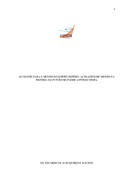Please use this identifier to cite or link to this item:
https://repositorio.ufrn.br/handle/123456789/16987| Title: | As chaves para o mundo do quinto império: as imagens de mundo na história do futuro do padre Antonio Vieira |
| Authors: | Macedo, Gil Eduardo de Albuquerque |
| Advisor: | Porto, Maria Emília Monteiro |
| Keywords: | História do futuro. Mundo. Teatro. Corpo. Quinto império. Antonio Vieira;History of the Future. Word. Theater. Body. Fifth Empire. Antônio Vieira |
| Issue Date: | 5-May-2014 |
| Publisher: | Universidade Federal do Rio Grande do Norte |
| Citation: | MACEDO, Gil Eduardo de Albuquerque. As chaves para o mundo do quinto império: as imagens de mundo na história do futuro do padre Antonio Vieira. 2014. 166 f. Dissertação (Mestrado em História e Espaços) - Universidade Federal do Rio Grande do Norte, Natal, 2014. |
| Portuguese Abstract: | Emblemática figura histórica, Antônio Vieira (1608-1697) é considerado um personagem indispensável para a história luso-brasileira. Entre os anos de 1646 e 1667, o padre iniciou a escrita da História do Futuro, primeiro volume da célebre Clavis Prophetarum , obra que anunciava o surgimento do Quinto Império , unidade político-teológica que alavancaria o processo de difusão do Cristianismo por todo o planeta, reconhecendo Portugal como vanguarda e centro de todo o movimento milenarista. Nelas, o jesuíta representou o Mundo em duas metáforas: teatro e corpo , espaços responsáveis pela visualização da abstrata verdade cristã. Partindo dos pressupostos hermenêuticos de análise, investigamos as relações históricas presentes na construção de tais representações, por meio das quais estabelecemos o diálogo entre a política, teologia e retórica seiscentista. Portanto, o seguinte estudo defende a hipótese que para além de um mera manifestação estilística, a espacialização do Mundo em metáforas foi formulada por Antônio Vieira como recurso em que se pudesse aguçar os ânimos de seus leitores, empenhar palavras em ações, tornar vivo e efetivo o uso de sua retórica |
| Abstract: | Iconic historical figure, Antônio Vieira (1608-1697) is regarded as an essential character to the Luso-Brazilian history. Between 1646 and 1667, the priest began writing the History of the Future, the first volume of the celebrated "Clavis Prophetarum , political and theological unity that would leverage the process of spread of Christianity across the globe, recognizing Portugal as forefront and center of all millenarian movement. Them, Jesuit represented the "World" in two metaphors: "theater" and "body" responsible for viewing spaces of abstract Christian truth. Starting from the hermeneutical assumptions of analysis, we investigated the historical relations present in the construction of such representations, by which establish the dialogue between politics, theology and seventeenth-century rhetoric. Therefore, the following study supports the hypothesis that beyond a mere stylistic expressions, spatial metaphors of "World" were formulated by Antonio Vieira as a resource that could sharpen the minds of his readers, engaging words into action, become alive and effective use of rhetoric |
| URI: | https://repositorio.ufrn.br/jspui/handle/123456789/16987 |
| Appears in Collections: | PPGH - Mestrado em História |
Files in This Item:
| File | Description | Size | Format | |
|---|---|---|---|---|
| GilEAM_DISSERT.pdf | 2,07 MB | Adobe PDF |  View/Open |
Items in DSpace are protected by copyright, with all rights reserved, unless otherwise indicated.

